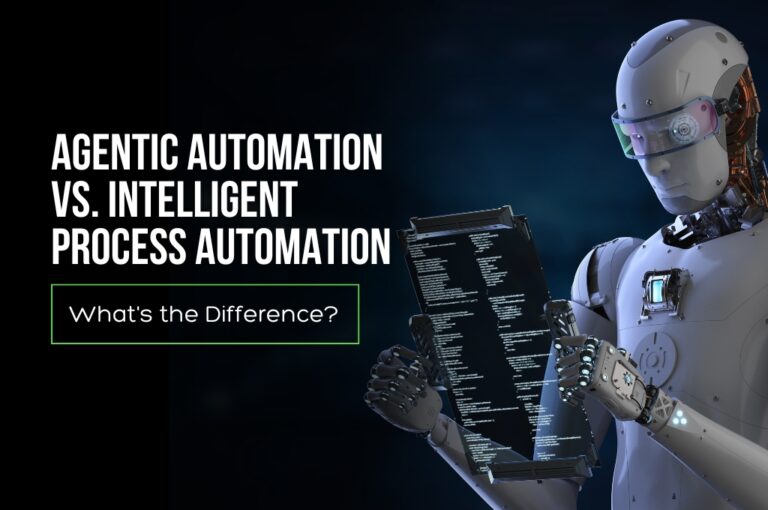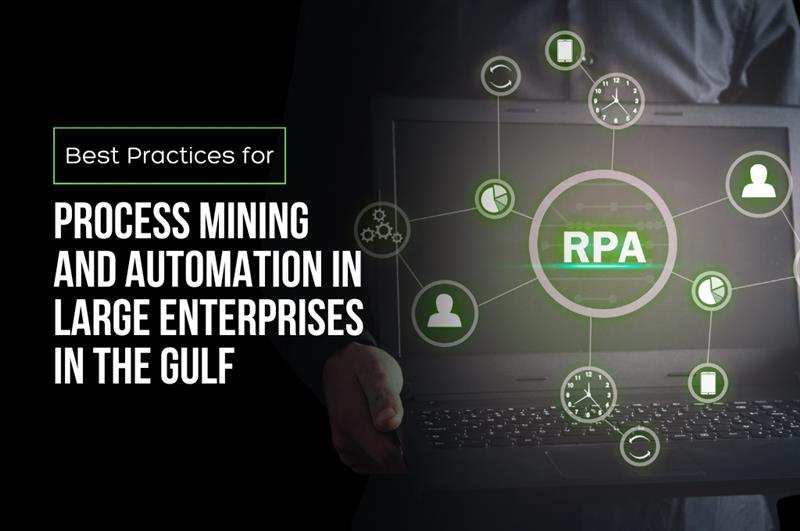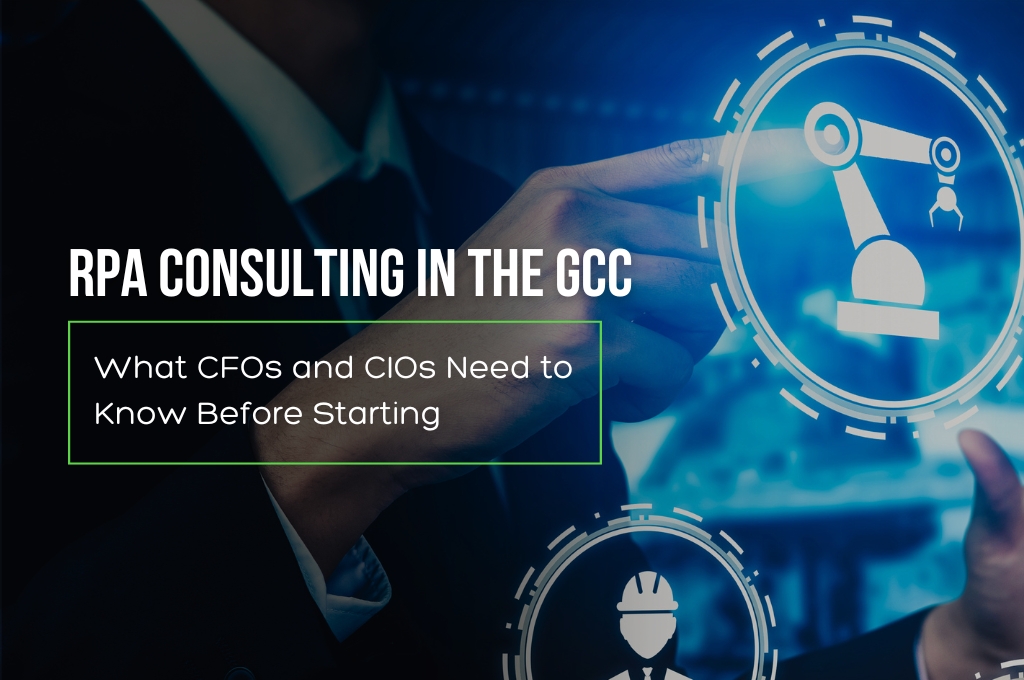Automation is evolving at a rapid pace, and two terms are making waves in the industry: Agentic Automation and Intelligent Process Automation (IPA). While both aim to streamline operations and improve efficiency, they serve very different purposes.
Agentic Automation is an AI-driven system that operates autonomously, makes decisions, and adapts dynamically to new situations. It can learn from real-time data and take independent actions without constant human intervention.
On the other hand, Intelligent Process Automation (IPA) is a structured automation framework that combines Robotic Process Automation (RPA), machine learning, and AI to execute predefined workflows. It follows rule-based processes and requires human intervention for complex decision-making.
So, what makes Agentic Automation different from IPA? Below, we break down the 10 key differences between these two automation approaches with real-world examples.
Key Differences Between Agentic Automation & Intelligent Process Automation
Difference #1 : Decision-Making Ability
Agentic Automation can think, reason, and make decisions independently. It continuously learns from real-time data and adapts its actions accordingly, making it highly autonomous.
Intelligent Process Automation (IPA), on the other hand, follows predefined rules and workflows. It executes processes efficiently but does not possess independent decision-making capabilities.
Example: A self-driving car using agentic automation makes split-second decisions based on traffic, weather, and road conditions. In contrast, an IPA-based system in a manufacturing plant only follows pre-programmed workflows, such as running quality control checks or automating assembly line operations.
Difference #2 : Adaptability to Change
Agentic Automation is highly adaptable. It continuously learns from new data, identifies patterns, and adjusts its responses in real time. This makes it effective in dynamic environments where conditions change frequently.
Intelligent Process Automation (IPA) is rule-based and requires manual intervention to update workflows when conditions change. It follows structured processes and does not adapt autonomously.
Example: A fraud detection system using agentic automation continuously learns from evolving fraud patterns and updates its detection methods automatically. In contrast, an IPA-driven fraud detection system only flags transactions based on predefined rules and requires human intervention to modify its parameters.
Difference #3 : Level of Human Intervention
Agentic Automation operates with minimal to no human intervention. Once deployed, it can autonomously analyze data, make decisions, and optimize its actions without requiring manual input.
Intelligent Process Automation (IPA), on the other hand, often requires human oversight. While it can handle repetitive tasks efficiently, it still depends on humans for handling exceptions, workflow modifications, and process optimizations.
Example: A virtual financial advisor using agentic automation can independently assess market trends and adjust investment portfolios without human approval. In contrast, an IPA-based finance tool automates data entry and report generation but requires manual review before executing investment decisions.
Difference #4 : Use of Machine Learning & AI
Agentic Automation relies heavily on advanced machine learning, neural networks, and AI models to make real-time decisions and continuously improve its performance. It can analyze large datasets, detect patterns, and refine its actions without predefined instructions.
Intelligent Process Automation (IPA) integrates AI components like RPA and basic machine learning, but it primarily follows rule-based automation. It cannot learn or evolve beyond its programmed logic.
Example: A customer service AI assistant using agentic automation analyzes past interactions and adapts responses based on customer sentiment. In contrast, an IPA-powered chatbot follows scripted responses and cannot modify its behavior without human reprogramming.
Difference #5 : Complexity of Tasks Handled
Agentic Automation is designed to handle complex, unstructured tasks that require reasoning, adaptation, and decision-making. It can function in unpredictable environments where variables constantly change
Intelligent Process Automation (IPA) is best suited for structured, repetitive tasks with well-defined inputs and outputs. It follows pre-programmed workflows and struggles with tasks that require flexibility.
Example: An AI-powered medical diagnosis system using agentic automation can analyze patient history, symptoms, and test results to recommend treatments. In contrast, an IPA-based hospital management system only automates appointment scheduling and patient record updates, requiring doctors to manually interpret data.
Difference #6 : Scalability in Business Operations
Agentic Automation can scale dynamically, adjusting its capabilities as business needs grow. Since it continuously learns and refines its processes, it can expand its scope without requiring extensive reprogramming.
Intelligent Process Automation (IPA) is process-driven and requires manual adjustments to scale. If business operations change, workflows must be reconfigured, making scaling more resource-intensive.
Example: An agentic AI-driven supply chain system can adjust inventory levels dynamically based on demand forecasts. In contrast, an IPA-based logistics tool automates shipment tracking but requires manual updates when supply chain disruptions occur.
Difference #7 : Handling of Unstructured Data
Agentic Automation can process unstructured and real-time data from diverse sources, including text, images, audio, and video. It uses natural language processing (NLP), computer vision, and deep learning to extract insights and make informed decisions.
Intelligent Process Automation (IPA) works best with structured or semi-structured data, such as databases and spreadsheets. It struggles with unstructured data unless additional AI models are integrated.
Example: A news aggregation AI using agentic automation can analyze articles, summarize key insights, and detect fake news. In contrast, an IPA-driven document processing tool can extract predefined fields from PDFs but cannot interpret free-text content.
Difference #8 : Error Correction & Self-Improvement
Agentic Automation can identify errors, learn from mistakes, and improve its processes over time. It continuously refines its decision-making using reinforcement learning and adaptive algorithms without requiring human intervention.
Intelligent Process Automation (IPA) does not self-correct and requires manual reprogramming when errors occur. It follows predefined rules and cannot autonomously improve its efficiency.
Example: An AI-powered cybersecurity system using agentic automation can detect new threats and update its defenses in real time. In contrast, an IPA-based security tool only follows preset rules and requires IT teams to manually update its threat detection criteria.
Difference #9 : Industry Applications & Suitability
Agentic Automation is best suited for dynamic industries where decision-making, adaptability, and real-time optimization are critical. It is widely used in finance, healthcare, cybersecurity, and autonomous systems.
Intelligent Process Automation (IPA) is ideal for process-driven industries that require workflow automation and operational efficiency, such as HR, customer service, manufacturing, and back-office operations.
Example: A hedge fund using agentic automation can analyze real-time market trends and adjust trading strategies autonomously. In contrast, an IPA-based finance system automates report generation and compliance checks but requires human intervention for investment decisions.
Difference #10 : Cost & Implementation Complexity
Agentic Automation requires significant investment in AI infrastructure, including machine learning models, cloud computing, and continuous training. Its implementation is complex and requires skilled AI engineers to build, maintain, and refine the system.
Intelligent Process Automation (IPA) is more cost-effective and easier to implement since it relies on predefined workflows and rule-based automation. Businesses can deploy IPA with minimal technical expertise compared to agentic automation.
Example: A fully autonomous customer service AI using agentic automation requires advanced AI training and extensive computational power. In contrast, an IPA-driven chatbot simply automates predefined customer support responses with lower setup costs.
Conclusion
Agentic Automation and Intelligent Process Automation (IPA) serve different purposes. Agentic Automation is ideal for complex, dynamic decision-making that requires real-time learning and adaptability, whereas IPA excels at streamlining structured, repetitive workflows with predefined rules.
For businesses that need self-improving, autonomous AI-driven solutions, agentic automation is the right choice. On the other hand, organizations looking for cost-effective process automation without heavy AI investments can benefit from IPA.
As automation continues to evolve, companies must evaluate their operational needs, scalability requirements, and industry demands before choosing between these two approaches. Understanding their differences ensures the right fit for long-term efficiency and innovation.




